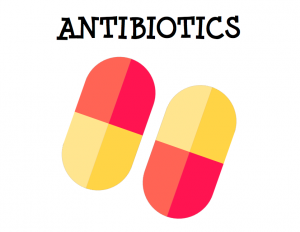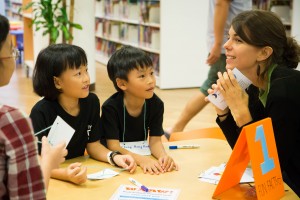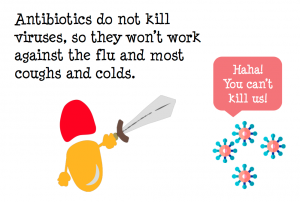The WHO’s Global Action Plan on Antimicrobial Resistance, has specific recommendations to educate the public about antimicrobial resistance and to introduce this issue into the educational curriculum. As part of the second World Antibiotic Awareness Week (November 14-18, 2016), we organized a two-day event at Jurong Regional Library over the weekend to teach children about antibiotic resistance. This was our first time running an event like this, but I can safely say that it was the most fun I’ve had teaching. For those of us working in research, lecturing at graduate level is the norm, so teaching pre-K, Kindergarten- and primary school-aged kids was quite a different experience. I’m glad to say that the event was a great success, and I thought it useful to share some personal observations. For those of you with experience in early years education, these might seem obvious, but for us, trained in experimental detail, scientific rigour and technical minutiae, translating evidence and distilling technical concepts into effective public messages can be a real challenge.
We began with the assumption that young children can be engaged in a meaningful conversation about antibiotic resistance. This is not an obvious assumption, as antibiotic resistance is difficult to explain, even to adults. But perhaps being based in a school of public health was an advantage, as our focus was not so much on the mechanisms of resistance, but on its prevention, which involves more familiar concepts of handwashing and vaccines. We found that children, even those as young as 3 years, were familiar with the idea of germs, and comfortable with the concept of germs spreading by touch and with bacteria being types of germs. Personal experience was also an important hook (‘my friend had chickenpox’, ‘my mom had to take antibiotics’). We tried to express size in scales that children could relate to (‘bacteria are so tiny that you can’t even see them with your eyes’, ‘viruses are even smaller than bacteria – so small you can’t even see them with a normal microscope’, ‘if you line up all the bacteria in your body, they’ll stretch around the Earth twice’1). And giving kids a chance to see bacteria under the microscope helped give a sense of scale, as well as being a big draw for them to come and join our event!
With the aid of some simple pictures, most children were also able to understand how antibiotics work (‘antibiotics kill bacteria, but not viruses’) and ask some pointed questions (‘how do the antibiotics kill the bacteria?’ ‘how do we kill the viruses?’). More surprisingly, we found that many of the children could also be trained to reason through the development of antibiotic resistance. They were generally comfortable with the idea that bacteria could develop ways to defend themselves against the antibiotics, and that antibiotics would then kill most of the bacteria but not the resistant ones. Many could also follow the reasoning that these resistant bacteria would then multiply and create lots of resistant bacteria, and when asked could correctly deduce that if they became ill with one of these bacteria, the antibiotics would not help to make them better. We used this to engage them in a conversation about the importance of handwashing and vaccines (‘injections’) to prevent them from getting sick in the first place. A few of the children were thoughtful enough to ask whether vaccines would also protect them from antibiotic-resistant bacteria.
Admittedly, some children were just there so they could get some stickers, but most were enthusiastic, engaged and keen to share their knowledge. And, of course, it’s not easy to measure how much impact we had in practice, though we hope we helped to create some young germ-busters and perhaps even a few scientists of the future.
So is WHO’s recommendation to introduce antimicrobial resistance into educational programmes feasible? I would say, yes, absolutely. We tend to think that some concepts are just too complex for us to explain to young children. The lesson from this weekend is that we’re probably better at communicating these concepts than we think we are.
by Clarence Tam
1 In fact, we wrongly said they’d reach to the moon and back – we had a rogue zero in our calculation. But hey, a recent paper suggests that scientists have been wrong about the number of bacteria in the human body by a factor of 10- to 100-fold, so I feel we can be allowed some leeway…



